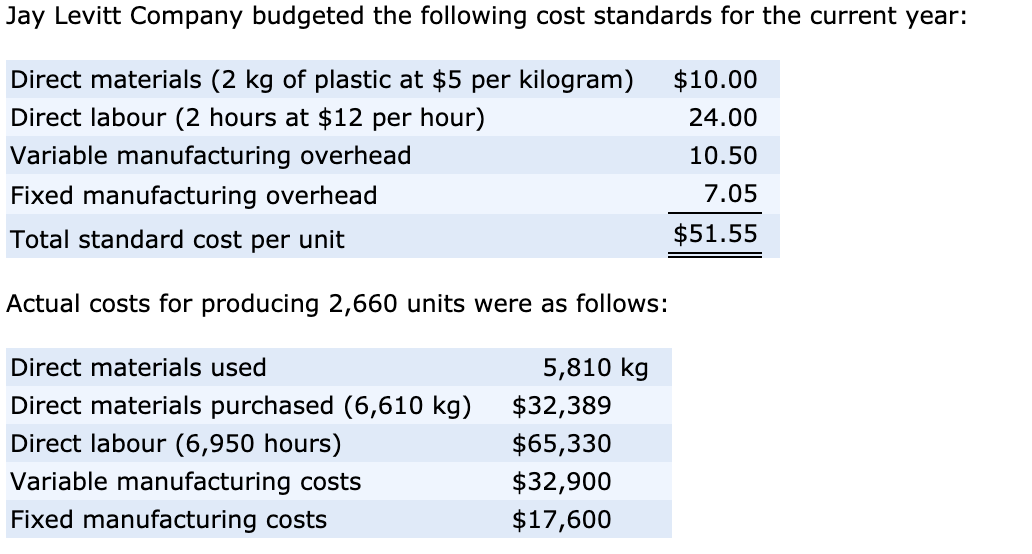
However, a favorable direct material price variance is not always good; it should be analyzed in the context of direct material quantity variance and other relevant factors. It is quite possible that the purchasing department may purchase low quality raw material to generate a favorable direct material price variance. Such a favorable material price variance will be offset by an unfavorable direct material quantity variance due to wastage of low quality direct material. Direct material price variance is the difference between what was actually spent on the raw materials purchased during a period and the standard cost that would apply if the materials were bought at the standard rate. To calculate the variance, we multiply the actual purchase volume by the standard and actual price difference. This calculation helps businesses understand the efficiency of their material usage and identify areas for improvement.
Material Variances FAQs
Someone on our team will connect you with a financial professional in our network holding the correct designation and expertise. Meanwhile, actual cost comes from real bills and receipts showing what your company did pay. Our writing and editorial staff are a team of experts holding advanced financial designations and have written for most major financial media publications.
Quick Links
Understanding direct material variance is crucial for businesses aiming to maintain cost efficiency and improve profitability. This concept involves examining the differences between expected and actual costs of materials used in production, providing insights into potential areas for financial improvement. To apply this method to the Band Book example, take a look at the next diagram. Direct materials actually cost $297,000, even though the standard cost of the direct materials is only $289,800.
Common Problems with Direct Material Price Variance
Understanding the factors that influence direct material variance is essential for businesses aiming to maintain control over their production costs. Market conditions, geopolitical events, and changes in supply and demand can all cause fluctuations in material costs. For instance, a sudden increase in the price of steel due to international trade policies can lead to an unfavorable material price variance for manufacturers relying on this resource. Companies must stay informed about market trends and consider strategies such as hedging or long-term contracts to mitigate these risks.
What is direct material price variance?
- Many factors influence the price paid for the goods, including number of units ordered in a lot, how the order is delivered, and the quality of materials purchased.
- Conversely, issues such as late deliveries, substandard materials, or unexpected price hikes can lead to variances.
- This formula is critical for understanding how actual spending tracks against estimations.
- One such technique is the use of trend analysis, which involves examining variance data over multiple periods to identify patterns and trends.
- You’ll need to gather data on the actual quantity of materials employed in production.
- Thus, the presence of a direct material price variance may indicate that one of the underlying assumptions used to construct the budgeted price is no longer valid.
Understanding the mechanism behind material price variance is fundamental in managerial accounting, serving as a tool to control costs and pinpoint discrepancies. This measures how much a company’s actual spending on materials differs from its expected spending. Think of it as checking if you paid more or less for materials than planned. Technological advancements and automation also influence direct material variance. The integration of advanced technologies, such as IoT and AI, into the production process can provide real-time data on material usage and identify inefficiencies.
The material price variance is adverse because the actual price is higher than the standard. The material price variance in this example is favorable because the company was able to get the materials at a lower cost compared to the budget. The standard price of $100 per bag was allowed in the budget, but the purchase manager was how to find tax records for a business able to source the materials from a cheaper supplier at the cost of $80 per bag. It could be because a company got a discount or faced a materials shortage. Maybe they switched to a new supplier or had to order materials in a rush and paid more. The term “standard price” refers to the cost you expect to pay per unit of material.
This ensures that the entire gain or loss on the procurement of materials is reflected in the results of the current period. Evaluating material price variance is pivotal for a business, as it sheds light on the efficiency of purchasing activities and can signal areas for financial improvement. By honing in on this metric, organizations unlock insights into whether deviations from standard costs are working to their advantage or pointing to underlying issues in procurement processes. This step is where you find out if you spent more or less than planned on materials. You calculate this price difference by subtracting the actual cost from the standard cost for each unit bought.
The direct material price variance can be meaningless or even harmful in some circumstances. For example, the purchasing manager might have engaged in heavy political maneuvering to have the standard price set unusually high, which makes it easier to generate a favorable variance by purchasing at prices below the standard. Consequently, the variance should only be used when there is evidence of a clear price increase that management should be made aware of. Since the price paid by the company for the purchase of direct material exceeds the standard price by $120, the direct material price variance is unfavorable. Calculate the direct material price variance if the standard price and actual unit price per unit of direct material are $4.00 and $4.10 respectively; and actual units of direct material used during the period are 1,200.
Direct material price variance (DM Price Variance) is defined as the difference between the expected and actual cost incurred on purchasing direct materials. It evaluates the extent to which the standard price has been over or under applied to different units of purchase. With our direct material price variance calculator, we aim to help you assess the difference between the actual cost of direct materials and the standard cost.

To understand more on this topic, check out our unit price calculator and cost of goods sold calculator. Direct materials quantity variance is a part of the overall materials cost variance that occurs due to the difference between the actual quantity of direct materials used and the standard quantity allowed for the output. If the actual purchase price is higher than the standard price, we say that the direct material price variance is adverse or unfavorable. This is because the purchase of raw materials during the period would have cost the business more than what was allowed in the budget.
